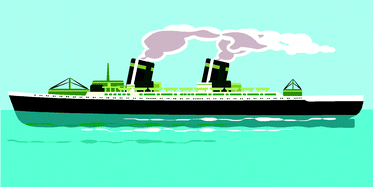A major aspect of monitoring the atmosphere is the quantification of man-made pollution and their interactions with the environment. Key physico-chemical characteristics of diesel exhaust particulates of sea-going ship emissions are presented with respect to morphology, microstructure, and chemical composition. Heavy fuel oil (HFO)-derived particles exhibit extremely complex chemistry. They demonstrate three distinct morphological structures with different chemical composition, namely soot, char and mineral/ash. The composition analysis investigates the content of environmentally-dangerous pollutants: metals, inorganic/mineral species, and soluble, volatile organic and ionic compounds. It is found that hazardous constituents from HFO combustion, such as transitional and alkali earth metals (V, Ni, Ca, Fe) and their soluble or insoluble chemical forms (sulfides, sulfates, oxides, carbides), are released together with particles into the atmosphere. The water soluble fraction, more than 27 wt%, is dominated by sulfates and calcium cations. They cause the high hygroscopicity of ship exhaust particles and their possible ability to act as cloud nuclei in humid marine environment.


 Please wait while we load your content...
Please wait while we load your content...